- Solar energy blog
- The bright side of cold weather: solar panels efficiency
The bright side of cold weather: solar panels efficiency
Europe gets its fair share of cold weather. But, as we’ll explore in this article, low temperatures aren’t necessarily bad for solar generation.


Jeremy Vickerman
Senior Content Manager
Senior Content Marketing Manager at RatedPower with extensive experience in content strategy, production, and communications. Over a decade of expertise spanning marketing, recruitment consulting, and public relations across the UK and Spain, with a strong track record in driving brand visibility and audience engagement.
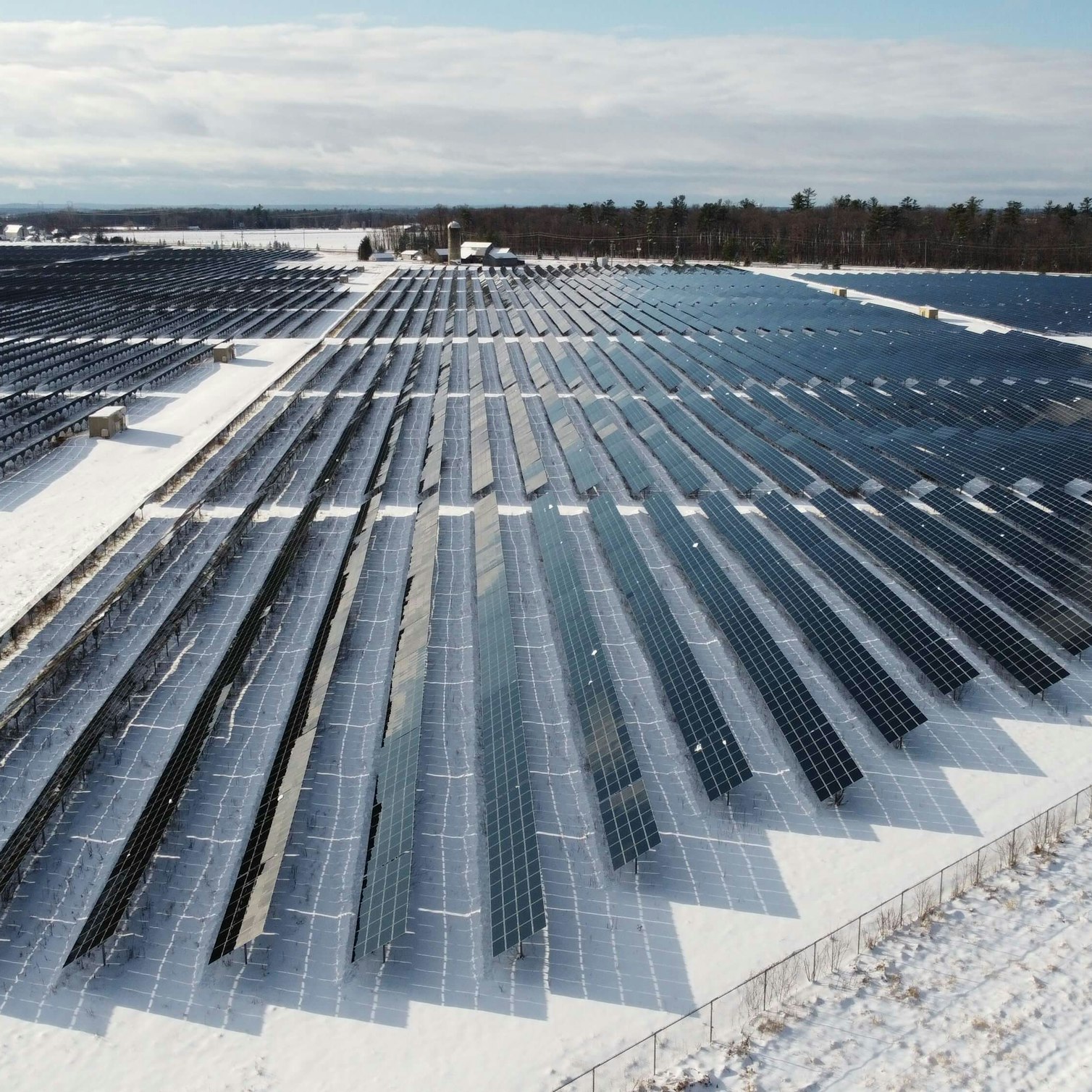
Content
Spain is generating more wind and solar power than ever. It now gets over 50% of its energy from renewable sources and aims to reach four-fifths of it by 2030.
The country’s current output led to a dramatic fall in energy prices in February 2024. At one point in February, energy prices in Spain were close to €2 per megawatt-hour (MWh). In France, they were €67 per MWh. This just goes to show that solar power generation may be at its peak during the summer, with its long days and sunny weather. But it remains a significant part of the energy mix, even in winter.
And here’s where things get interesting. Did you know solar panels are more efficient the colder the weather gets? Let’s take a look at why this is the case.
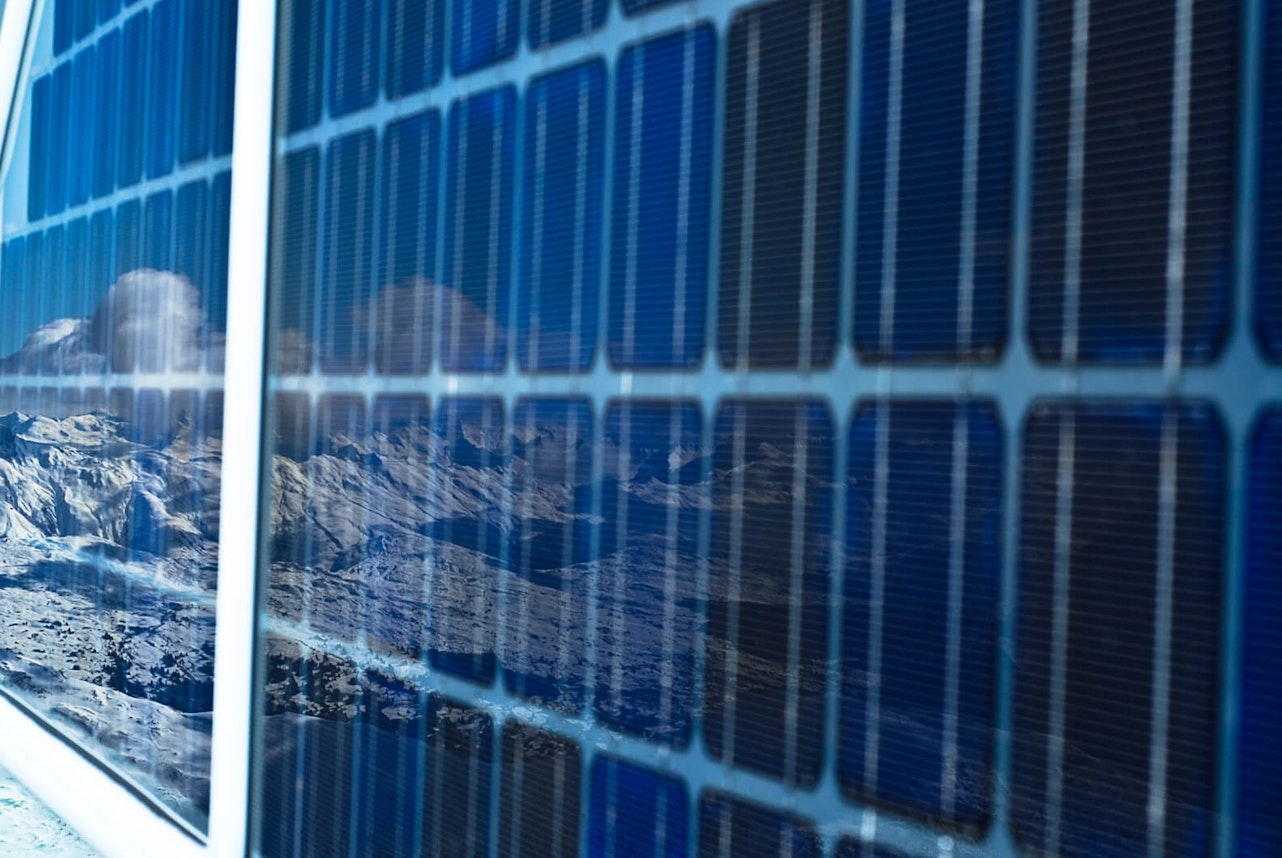
How do we ensure a stable power supply when the sun doesn’t shine or the wind doesn’t blow? This eBook explores how grid operators, technologies, and policy frameworks are evolving to tame the natural variability of renewables. Get your copy today!
How does the cold affect solar panels?
It seems counterintuitive, but research shows that heat actually reduces solar panel electricity production. PV modules are tested at a temperature of 25 degrees. Depending on their installed location, heat can reduce output efficiency by 10-25%.
As the solar panel’s temperature increases, its output current increases exponentially while the voltage output is reduced linearly. The voltage reduction is so predictable that it can be used to accurately measure temperature.
Cold weather, even snowy weather, can be good for solar electricity production. But it can also hamper production in some ways. Let’s take a closer look.
Ways cold weather increases solar electricity production
Colder temperatures improve energy production efficiency. They increase the daily amount of electricity produced despite fewer daylight hours.
Solar panels create electricity from the sun’s light, not the sun’s heat. It isn’t a case of the hotter, the better. In reality, the best-case scenario regarding panel efficiency is a bright, cold day.
Sunlight can still reach solar panels and maintain energy production despite light snow cover.
Bifacial modules experience a boost in efficiency after a snowstorm because snow reflects the sun’s rays. This makes these panels optimal for areas with regular ice, snow, or hail.
Because solar panels are installed at an angle, most snow slides off. Alternatively, plants with single-axis structures and remote monitoring systems can, in the event of snow, move panels to clear the snow.
The dark surface of the cells attracts heat. This causes snow to thaw and slide away at a 30º inclination (the usual in Spain). Once the snow has gone, we’re left with a clean, shiny, and more effective panel surface.
Many cities and states in cold, northern regions have set up favorable incentives for solar installations.
Wind also helps solar panels produce more voltage at lower temperatures. Wind chill lowers the ambient temperature. This wind chill effect carries away heat and enables panels to perform better. Another reason solar panels work better in windy conditions is that there are often fewer lingering clouds.
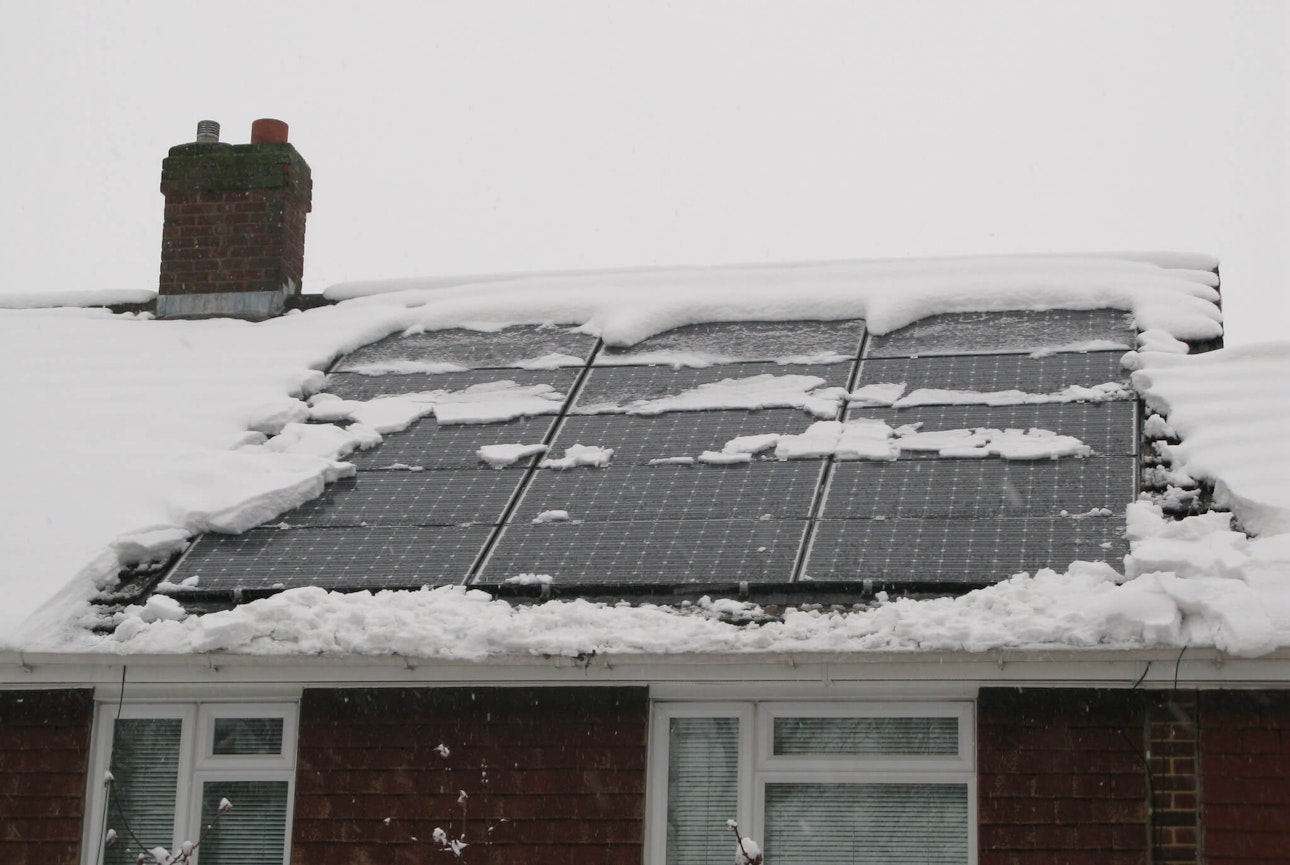
Ways cold weather decreases solar electricity production
A light dusting of snow isn’t a big problem. The sun’s UV rays can still penetrate through a thin layer of snow. Then, the wind usually clears the panels. However, if a heavy snowfall leaves a thick layer of snow on solar panels, energy production may decrease or even cease.
It’s common that if part of the module is covered and unable to produce energy, the whole panel will stop generating electricity.
The angle of panels may need adjustment to a higher angle in winter to capture more light. This angle may make it more difficult for snow to slide off the panel on its own.
The amount of electricity generated during winter is less dependable than in the summer due to extreme weather conditions and fewer sunlight hours.
It’s important to install extra-durable solar panels in areas with heavy snowfall. These panels are suited to snowy conditions. They are rated to handle the weight loads from heavy snow and don’t have frames for the snow to slide off. This may increase costs.
Costs may also increase due to maintenance and personnel requirements. You may need to manually clear heavy snow if it completely covers the panels and blocks the transmission of all sunlight.
In summary
Snow isn’t always bad for solar energy production. In fact, the considerations listed above show a clear pattern.
Unless there are extreme weather conditions with heavy snowfall, cold weather has a positive impact on solar installations, especially on a ground-mounted scale.
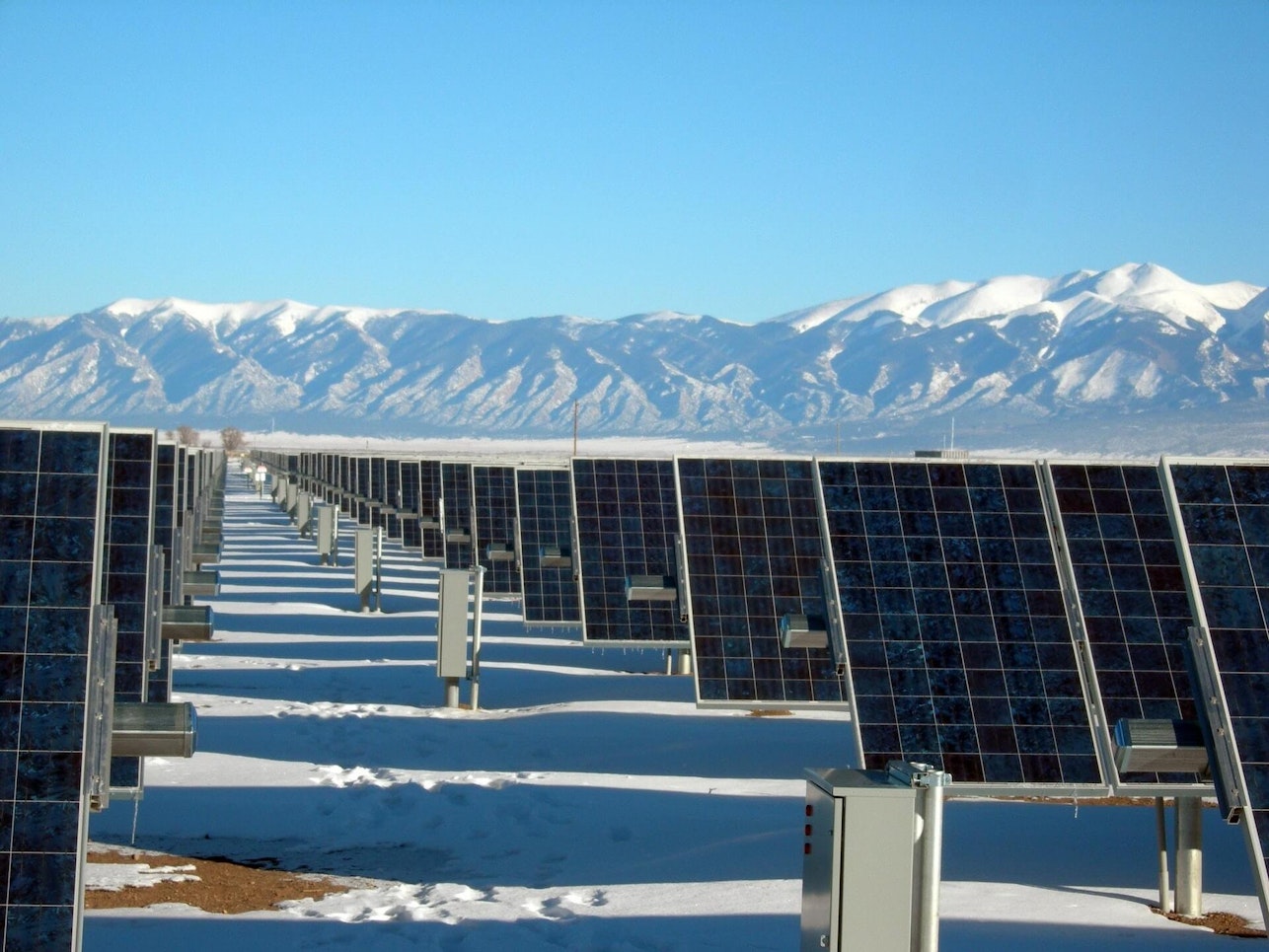
If you are interested in knowing more about effects on your solar system design, with RatedPower you may simulate different weather conditions and study how exactly it affects your solar plants. Go ahead and take a free product tour.
Webinar: Mitigating extreme weather risks with advanced data in solar designs
Join Laura Rodriguez (Territory Manager at RatedPower) and Evan Kyte (Product Manager at Clean Power Research) in this webinar to discover how incorporating precise, site-specific irradiance and weather analytics during the preliminary design phase can significantly reduce risks and enhance project performance.
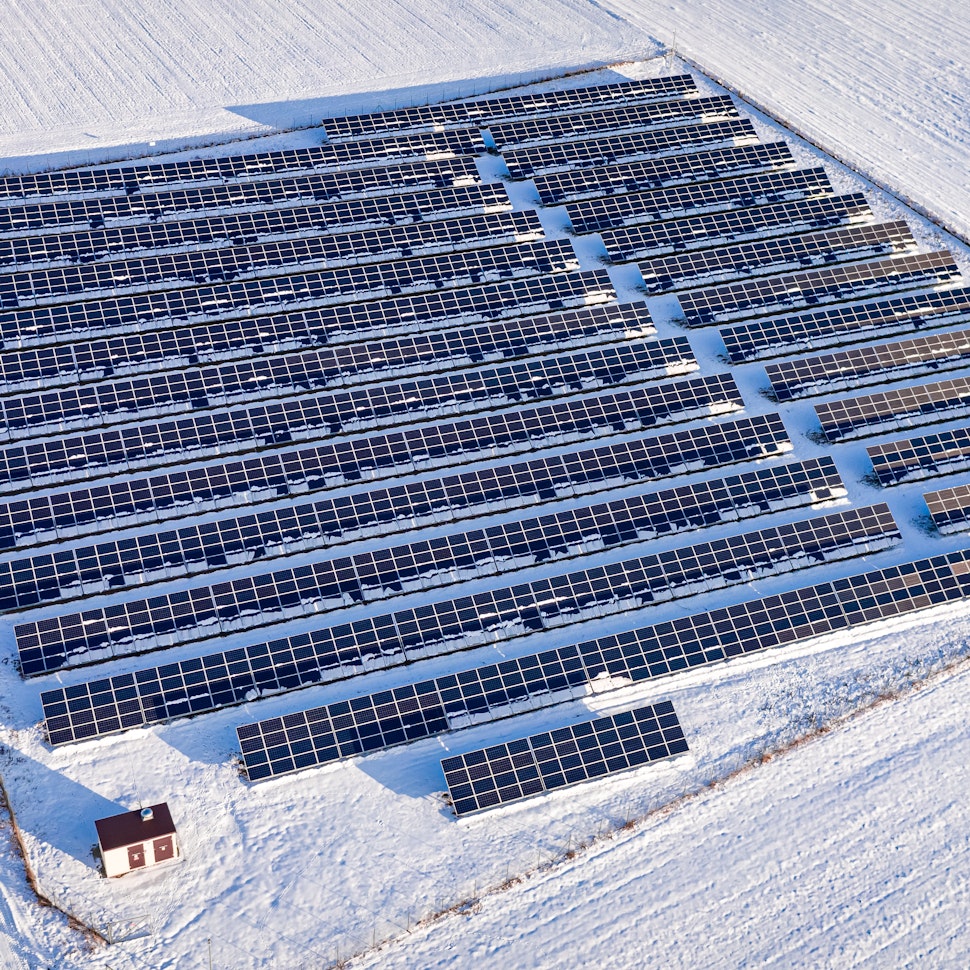
Latest stories
Related posts
Technology and engineering
Outsmarting congestion: How efficient solar design helps navigate Nordic grid limits
Learn how Nordic operators and solar developers are adjusting to tighter grid conditions and how policy and design decisions are keeping projects on track.
Updated 16 DEC, 25

Technology and engineering
The rise of ultra-thin perovskite solar cells
Learn about Japan’s $1.5B initiative to commercialize ultra-thin, flexible perovskite solar cells and how it could transform the solar landscape globally.
Updated 30 SEP, 25

Technology and engineering
The green hydrogen boom in LatAm
Latin America is emerging as a green hydrogen leader. Learn how LatAm countries are leveraging solar and wind power to drive green hydrogen production.
Updated 22 JUL, 25

- RatedPower
- Solar energy blog
- The bright side of cold weather: solar panels efficiency
 Watch a demo
Watch a demo Ask our AI Product Expert
Ask our AI Product Expert
